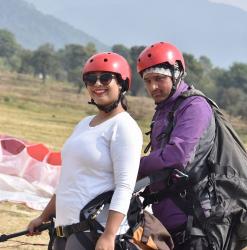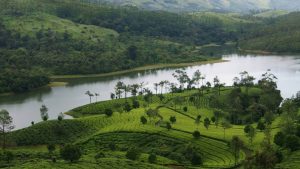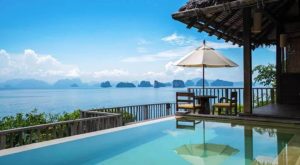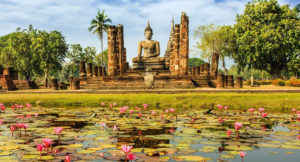Last Updated: July 26, 2018 Nidhi Singh
It is believed that faith is the key to the mysteries of life and that is why we who spend our short span on earth have an incredible zeal of making most of each day. It is just so lovely that we find happiness in small things and are grateful for little blessings and have reverence for things that may or may not have physical existence. After all it is for nothing that merely believing on the legend of Amrit (Ambrosial) spilled on four particular destinations long long ago, believers form largest religious gathering in the world. It is the ‘Faith’ that helps materialize such massive events and it is the same ‘Faith’ that gives believers the strength to gather at these four sacred places in India from across the world. Evidently, the four Kumbh Mela venues, namely, Haridwar, Allahabad, Ujjain and Nasik have grown up to be important pilgrimage centres in India and along with providing the ground for the fair, they have eventually become popular tourist hubs with their numerous temples and beautiful landscape.
So, you know, it is not only the ghats that you need to make it to, there are number of places that you must explore while you are at one of the Kumbh Mela destinations in India.
Here is a blog that helps you learn about places of interest that you must visit at different Kumbh Mela venues:
Haridwar
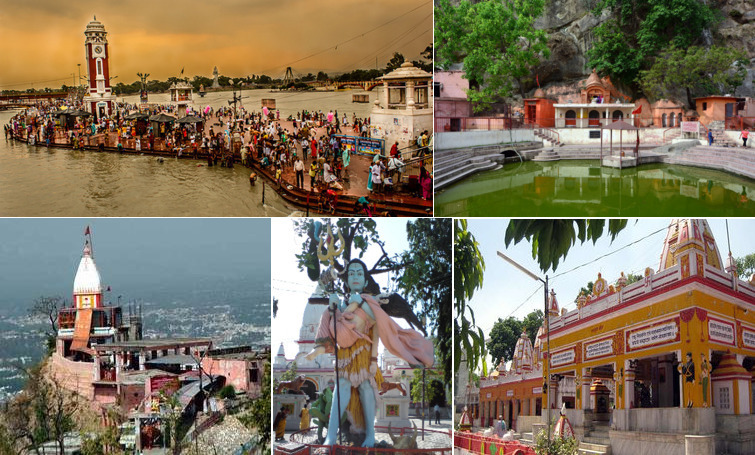
Har Ki Pauri: One of the most popular places in Haridwar, Har Ki Pauri is a ghat built by King Vikramaditya who ordered for this ghat to be constructed in the memory of his brother Bharthari. The most famed spot here is the Brahmakund, which the devotees throng year round. Har Ki Pauri is also famed for its evening Aarti that is organized each evening, it truly is one of those events in Haridwar that one should not miss out on.
Bharat Mata Temple: One of its kind temple, Bharat Mata Temple is situated on the bank of Ganga. It is a huge a temple in Haridwar that is dedicated to Mother India and has deities of historical characters/heroes. The temple is an 8-storey structure and each floor is dedicated to different Gods and mythological characters. The first floor has the statue of Bharat Mata, on the second floor is a temple (Shur Mandir) dedicated to the heroes of India. The third floor is known as the Matri Mandir and is dedicated to the achievements of women such as Radha, Mira, Savitri, Draupadi, Ahilya, Anusuya, Maitri and Gargi. The fourth floor is devoted to saints from various religions and is called Sant Mandir. The sixth floor is an assembly hall with walls depicting the symbolic coexistence of all religions practised in India. The seventh floor is dedicated to all the incarnations of Lord Vishnu and the eighth floor is the devoted to Lord Shiva.
Chandi Devi Temple: Chandi Devi Temple is perched on what is called the Neel Parvat. There is a trek of 3kms from Chandighat for the temple. One can also take the cable car. According to legends, it is the same place where Goddess Chandi killed Chanda-Munda, a chief of the army of the Demon Kings Sumbha and Nishumba. It is also believed that the main deity in the temple was established by the Adi Shankarcharaya himself in the 8th century.
Bara Bazaar: Bara Bazar is the largest shopping place in Haridwar. One can fine handicraft articles along with other necessary items in the market, also souvenirs and Rudraksha seeds, churan (digestive powders) and a variety of sweets made from milk can also be bought in Bara Bazar. Ayurvedic medicines are also sold in the market on a large scale.
Bhimgoda Kund/Tank: The Bhimgoda Kund/Tank is situated at a distance of about 1km from Har ki Pauri. Legend has it that while proceeding to the Himalayas, the Pandavas stopped by this place to have some water. IT is said that one of the Pandavas, Bhima drew water from the rocks by thrusting his knee (Goda).
Daksha Mahadev Temple: The legend has it that once King Daksha Prajapati, who was the father of Dakshayani (Lord Shiva’s first wife), organized a yagña, in which is he intentionally did not invite Lord Shiva. However, Lord Shiva intruded the yagna and on doing so he was insulted by the king. When Dakshayani saw this, she got infuriated and immolated herself in the yagna kund. Later King Daksha was killed by a demon called Virabhadra, which was born out of Shiva’s anger. However, after sometime the king was brought to life and was given a goat’s head by Shiva. Dakhsh Mahadev Temple has been dedicated to this legend and is visited by many Shiva devotees.
Kanva Rishi Ashram: Situated about 40kms from Rishikesh, Kanva Rishi Ashram is placed amidst the tranquil nature, Kanva Rishi Ashram is a perfect destination to spend time with nature and quietude.
Mansa Devi Temple: Perched on Bilwa Parvat, Mansa Devi is one of the most famous tourist attractions in Haridwar. The temple that can be reached by a cable car is dedicated to Goddess Mansa (the goddess who fulfills wishes). There are two idols of the Goddess in the main temple; one with three mouths and five arms and the other one has eight arms and three mouths. Another reason for the temple being famous is the spectacular view one gets from the cable car.
Sapt Rishi Ashram or Sapt Sarovar: Sapt Rishi Asharam is the Sanskrit learning point and is so named after the where seven sages: Kashyapa, Vashisht, Gautam, Jamadagi, Vishwamitra, Bhardwaja and Atri who once meditated here. The ashram is at a short distance from the bank of the River Ganga and thus has quite a scenic view. The legend has it, Pandavas while going to Himalayas crossed this place.
Shantikunj: The headquarter of the All World Gayatri Parivar in India, Shantikung is situated at the bank of River Ganga, at a distance of about 5kms from Haridwar Railway Station. Shantikunj is thronged by a large number of people seeking spiritual guidance, thus it is one of the best places to see in Haridwar. The key features of Shantikunj are Social Reforms, Psycho-Social Engineering, Disaster Management, Self-reliant Development of Rural India, Comprehensive Training Programs, Revival of Vedic culture, Reinvestigation of Vedic literature & Methods of Sadhana , Sixteen Sanskar (sacramental rites), Vichar Kranti Abhiyan (Thought Revolution Movement), Innovative research in Ayurveda, Tirthas (Pilgrimage Centers), Worshipping the deity of human life through threefold path of Upasana , Sadhana and Aradhana, and Ascent and Empowerment of Women and Transformation of Youth : Shiksha and Vidya ( Education, Knowledge and Righteous Intellect).
Patanjali Yog Peeth: Patanjali Yog Peeth today is one of the most popular Yoga institutes in India that is run by Yog Guru Baba Ramdev. Situated on the Delhi-Haridwar Highway, Patanjali is an asharam where several swarm for one purpose or the other.
Chilla Wildlife Sanctuary: Also known as Rajaji Wildlife Sanctuary, Chilla Wildlife Reserve is located 18kms from Haridwar and is home to many wildlife species like Elephants, Tigers, Bears and Small cats. It has a rich variety of of flora which make this 249 sq km wildlife sanctuary quite a scenic destination. This is the perfect destination for wildlife lovers.
Allahabad
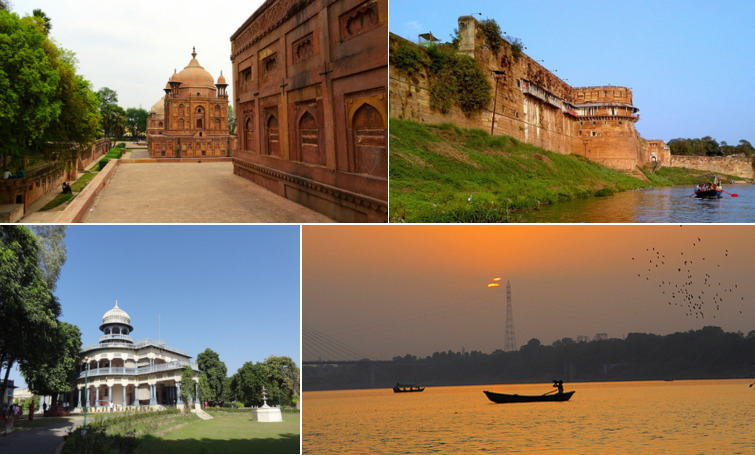
Triveni Sangam: Triveni Sangam is the most popular tourist destination in Allahabad. It is where the three rivers Ganga, Yamuna and Saraswati (mythical river). The place is considered as one of the major sites of the Kumbha mela which is held once in every 12 years.
Allahabad Fort: Built by emperor Ashoka, Allahabad Fort was renovated by the Mughal Emperor Akbar in 1583. Allahabad Fort is situated near the Triveni Sangam confluence and is the largest fort built by Akbar. The fort has high watchtowers that guard three galleries in the fort complex. The important monuments and buildings inside are the Zanana Palace for the women, the Saraswati Koop which is considered as the source of the Saraswati River and a 3rd century BC Ashoka Pillar. It also houses the Immortal tree or Akshayavat which can be witnessed from the outside from the southern wall.
Khusro Bagh: Khusro Bagh is a walled garden which is home to three mausoleums built in the Mughal style of architecture. The three tombs belong to the eldest son of the Mughal Emperor Jahangir, Khusaru Mirza and his first wife Shah Begum and his daughter Nithar Begum. The name Khusro Bagh is named after Khusaru Mirza who rebelled against his father that eventually led to his death and his burial along with his family in the three tombs. The tombs are the fine specimens of Mughal arts and architecture and are adorned with stone carvings and motifs.
Anand Bhavan: Anand Bhavan was the Nehru Family residence built by Motilal Nehru. The building was also known as the Swaraj Bhavan and was donated to the Indian National Congress in 1970. Today, it is museum that depicts the life and achievements of the Nehru family. It also houses the Jawahar Planetarium which was constructed later in 1979.
All Saints Cathedral: All Saints Cathedral displays a striking 13th century Gothic revival architecture. The church is a massive building that encompasses an area of approximately 1250 square meters and is one of the most prized buildings from the colonial India. The complex also houses a memorial to Queen Victoria and functions as a lantern tower.
Ujjain
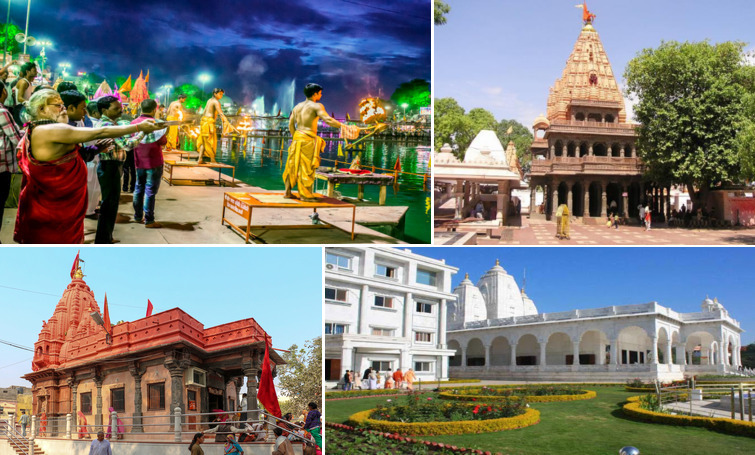
Mahakaleshwar Temple: Mahakaleshwar temple is the most famous temple in Ujjain. It is one of the 12 Jyotirlingas and is the place where the Shivlinga faces the south direction, which is why it is also called as Dakshinmukhi or South Facing Shivling. If you are visiting this place then the Bhasm Aarti is a must-see.
Kalbhairav Temple: A Famous temple in Ujjain, Kalbhairav is one place that should be visited at least once in a lifetime. Lord Kalbhairav is also known as the Protector of the city and liquor is one of the offerings in the Kalbhairav temple.
Harsiddhi Temple: Harsiddhi Temple is situated near the famed Mahakaleshwar Temple. The temple is reckoned as one of the Shakti Peeths in India . One can visit this temple at any time of the year , however visiting in Navratri is an amazing experience.
Mangalnath Temple: Mangalnath Temple is the only temple in the world dedicated to Mangal Dev. One can have a Mangal Grah Nivaran Therapy by the priests of Mangalnath Temple and that is why the shrine is quite popular amongst the Hindu believers.
Bade Ganeshji Ka Mandir: Bade Ganeshji ka Mandir is also located near the Mahakaleshwar Temple.There is a Large King Idol of Lord Ganesha in the temple and that is how the temple got its name as Bade Ganeshji ka Mandir.
Radha Madan Mohan Temple: Radha Madan Mohan temple is also known as ISKCON Temple. Like other Krishna Temples this one is quite popular amongst both Hindus and people of other religions. The aartis and bhajans are enjoyed by everyone.
Chintaman Ganesh Temple: Chintaman is a temple of Lord Ganesha and it is one of the best places to visit in Ujjain. This temple is built across the Kshipra River on the Fatehbad railway line. The temple is thronged by multitudes of people that come to do away with all their worries. The term Chintamani is another name used for Lord Vishnu, who is considered as the preserver of the Universe as per Hindu Mythology.
Ram Mandir Ghat: Ram Ghat is located near Mahakaleshwar Temple and it is known for its divine evening Aarti on Kshipra River. Apart from being the place of religious importance, it is a fascinating place to take small walks in the early morning or at the time of sunset.
Ram Mandir Ghat: Bhartrihari Cave is located around 5 to 6 KM faway rom Mahakaleshwar Temple and is historical place where King Bhartrihari spend his entire life after becoming Sadhu. The legend has it, Bhartrihari renounced his affluent lifestyle and adopted the garb of an ascetic and the reason behind it was his disturbing relation with his wife, which gave way to many complexities that he could not endure. The heartbreak led him to give up all his palatial dreams and become a spiritualist.
Siddhavat: Siddhavat of Ujjain holds a special place for all hindu pilgrims. Post-funeral rites are performed here at the Siddhavat ghat of holy Shipra River. Skanda Purana has referred to this place as Preta-shila-tirth. According to some opinion Parvati performed her penances here. This has also been a place of worship for the followers of Nath sect.
Chaubis Khamba Temple: Chaubis Khamba temple is known for its unique architecture and story. According to old tradition Chaubis Khamba constituted the majestic entrance gate of Mahakala-Vana. Architectural design, of the twenty four ornate columns date back to the ninth or tenth century AD.
Nasik
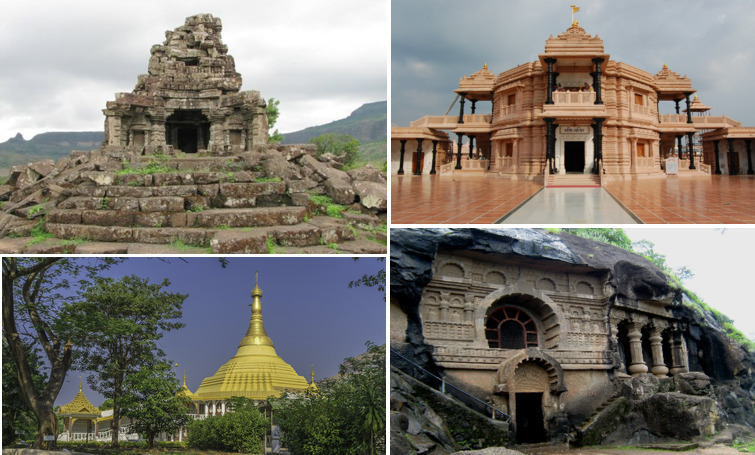
Anjaneri: Anjaneri is revered as the birthplace of Lord Hanuman, thus it is an important pilgrimage around Nasik. Ajaneri is located on the Nasik-Trimbakeshwar road, the place is a rugged terrain amidst the lustrous greenery. One can also see numerous Jain temples scattered on the landscape making the place look even more divine. Its rocky surroundings offer good opportunity for rock climbing. One can visit the Institute of Numismatic Studies, which is a unique museum in Asia.
Bhaktidham: Bhakti Dham is known for its numerous temples situated near Dindori Naka. It is a prominent pilgrimage centre for the devotees coming to Nashik. The place thrives with frequent religious discussions, poojas and deliberations on Vedas. Here one can buy a wide range of religious books as well.
Buddha Pagoda, Igatpuri: Igatpuri is hill station located in the Western Ghats. The station lies in Nashik District, between Mumbai and Nashik Road on the Central Railway and is known for its Buddhist Pagoda, Meditation called Vipassana and Vada Pavs.
Chambharlena: Chambharlena boasts scores of temples and holy places. One among such sacred spot is Teerthraj Gajpantha, which is a holy places of the Jains. Placed atop a hill at an elevation of 400 feet, Chambharlena offers a panoramic sight of the valley. Teerthraj Gajpantha also has Chambharlena caves as a portion of this famous complex. The caves consists of other important structures like a small hut, a temple, among other things. The popular belief is that Chamaraj the King of Mysore built Chambharlena in 600 BC.
Dadasaheb Phalke Samarak: The Dada Saheb Phalke is recognized as the legendary figure behind the century old Indian Cinema. A memorial to this great visionary has been set up in Nashik. The building contains a place for meditation, a main conference hall and an exhibition center. The Samarak also displays the glimpse of the works of Dadasaheb Phalke. The Smarak spreads across a vast extent of 29 acres and has a pretty garden in its courtyard.
Ganga Ghat: Ganga ghat is one of the most prominent ghats on the Godavari River that flows through Nashik. The ghat is replete with number of temples and is presumed to be the place where one can be cleansed from the sins. The ghat looks incredibly stunning in the twilight, when the holy waters of the sacred river is enlighten with multitude of oil lamps and hovers of flowers.
Jain Mandir: A hugetemple complex , Jain Mandir is dedicated to Jain saints at Vilhouli, Nasik. This massive three-storied shrine presents a different architectural grandeur than that of the other temples.The temple is constructed with white marble and pink sand and the ground floor of the building houses a Pravachan Hall, where sermons and meditations take place. “Choumukhji” is placed in the first floor and the third floor is reserved for “Ashtapadji”. One among the deities of this temple is that of the 24th thirthankara. This deity weighs 12 ton and is made up of Panchdhatu.
Kalaram Temple: Kalaram Temple was built by the Peshwas and is an important pilgrimage site in Nashik. This temple is famous for the great procession that are held here during Ramnavami, Chitra Padwa ( New year day for Hindus) and Dasara. This temple is built of black stone and the tip is made up of 2 tons of gold.
Kapileswara Temple: Kapileswara Temple is one of the oldest temples in Nasik. The temple is dedicated to Lord Shiva and is located on the bank of sacred river Godavari. One of unique thing about this temple is that there is no Nandi Idol in the temple premises. Generally, all Shiva temples have an idol of Nandi Bull, which overlooks its master’s sanctum.
Modakeshwar Ganesh Temple: The Modakeshwar Ganesh Temple is yet another famous temple in Nasik. The idol in the temple is believed to be self emerged and is also known as ‘Swaymbhu’. The temple derives its name from the ‘Modak’ a special Maharastrian dish made of coconut and jaggery. This dish is considered to be Lord Ganesh’s favourite.
Muktidham Temple: Muktidham Temple is a beautiful marble temple complex situated on the suburbs of Nasik. An abode of all most all the gods and goddesses of the Hindu pantheon, the shrine displays the facsimile of all the 12 Jyotirlingas. It is believed that a holy darshan of this shrine provides as much virtue as a visit to four holy places, Chardham. The temple has exquisitely carved interior walls with the 18 chapters of Bhagavad Gita.
Naroshankara Temple: Naroshankara is an 18th century temple dedicated to lord Shiva or Shankar. This temple has unique style of architecture called Maya, which is a classic example of the 18th century structural design. The stunning sculptural works on the exterior exhibits strings of intricate designs. Each section displays some sort of ornamental works that is further enhached with elaborate laceworks, peacocks wearing blob garlands, statues of the saints in Padmasana and an assembly of animals. Other conspicuous formations, which are worth watching, include Naroshankar Bell and Barasati.
Panchavati: Panchvati is considered as the most holy spot in Nasik and is believed to be a shelter to Lord Ram, Lakshman, and Sita during their exile. This sacred spot gets its name from the five banyan trees that stand by the riverside. Believed to be a part of the Dandakaranya Forest, Panchavati acquires a prominent place in the history of the city. People frequent here to take a holy dip so that they can be cleansed from their sins.
Pandavleni Caves: The caves are a cluster of Hinayana Buddhist rock cut caves that date back to 1st century BC. Pandavleni caves are located on the Trivashmi hills and have carved doorways and excellent sculptures. Out of the 24 caves, 3, 10, 18 caves are worth visiting for their outstanding sculptures. The caves house icons of Buddha, Jain Teerthankara Vrishabhdeo, Ambikadevi, Veer Manibhadraji and Bodhisattva.
Ramkund: Dubbed the ‘Gangesof the South,’ Ramkund in the sacred river Godavari, draws countless pilgrim every year. The popular belief is that Lord Ram had his bath here, at some stage of his exile and that is why in 1696, Chitrarao Khatarkar built a holy tank here. Devotees gather here to plunge their beloved’s ashes on the strong belief that it will help the dead get salvation.
Saptashringi Devi Temple: Saptshringi Devi Temple is a major shrine devoted to the Saptashringi goddess (Seven pinnacled goddess). She is reckoned to be one of the forms of Shakti and the destroyer of evil. In this holy shrine, she is depicted with 18 hands.
Sita Gufa: Sita Gufaa is believed to be the place where Sita was kidnapped by the demon king Ravana. The cave is located at the western side door of Kalaram Temple. The cave is accessible only through the help of a narrow staircase. It is believed that the temple here has the same Shivlinga which was worshipped by Sita.
Someshwar Temple: Someshwar is one of the oldest temples dedicated to Lord Shiva. The temple is situated on the banks of the sacred river Godavari and is said to be the abode of Lord Hanuman. The temple is surrounded by greenery, which provides a serene environment. The river passing through here is apt for swimming and boating.
Sula Vineyards: Among the various grape producing areas in Nasik, Sula Vineyards acquired a prominent name. From its formation in the year 1997, Sula has managed to complement itself with the reputation of India’s best wineries. Recent years have shown an amazing growth of these vineyards from the original 30-acre family estate to a vast spread of 1500 acres. Among the significant feature of these wineries is the tasting room, which covers a total area of 2000 square feet. Besides offering the tasty wines, this room shows off a balcony from where one can get the panoramic view of the vineyards bounded in a scenic terrain. Although, I am not really sure, if you would like to visit this place during the Kumbh Mela, but in case you are looking for a new place to explore near Nasik then this one right here is the best!
Sundernarayan Temple: Sundernarayan is a Vaishnavite temple on the lofty west bank of the Godavari. The temple has the main deity of Lord Vishnu, which is flanked by Lakshmi and Saraswati deities. There are small carvings of Hanuman, Narayana and Indira on the walls. The shrine has imposing architecture especially the vaulted niche, which strikes a chord with the Mughal sculpture. Other significant feature of this finely carved stone temple is that it is erected at such an angle that on 21st March, rays of the rising Sun first fall exactly upon the idols.
Tapovana: An important part of the Dandakaranya forest, Tapovan is a scenic spot that has a close association with the epic Ramayana. It is believed that it was here that Laxmana – brother of Rama, cut the nose of Shurpanakha, the sister of Ravana. This sacred place has temples of Laxmana and Hanuman. This stunning locale allures the nature lovers as the noiselessly babbling stream, long stretch of green woods and proximity to jungle’s flora and fauna adorns the area.
Trimbakeshwara Temple: One of the 12 Jyotirlingas, Trimabakeshwara temple is devoted to Lord Shiva. It is said that the source of Godavari river lies few hundred feet above the temple. One will see the combination of both Malwa and Meru style in its architecture here. The shrine is amongst the most popular places to see in Nasik, however, Non-Hindus are not allowed here.
Vihigaon Waterfalls: Situated on the outskirt of Nasik, Vihigaon is 120 feet of gushing waterfall. Adventure aficionados come here to attempt Canyoneering, which is a brand new sport that’s becoming very popular in India now. This unique, multi-sport adventure combines rappelling, down-climbing and river tracing in a deep valleys and Vihigaon Waterfalls is one of the ideal places to try this sport.
There are several other places to explore at these four Kumbh Mela destinations, if you know more about them, do let us know in the comment box below. If you liked this blog please don’t forget to give it a Big Thumbs Up! You can also share this blog on the social media platforms. Apart from it, if you are planning a visit to one of these destinations and don’t know how to go about it, give Tour My India a call at +91-9212777223/24 or drop in your queries at info@tourmyindia.com.
We would be happy to help you with your holiday plans and shall offer best travel packages and deals.
Published: 19 May, 2016
From the Lake District, Nainital, Nidhi Singh is a travel writer whose love for mountains can be seen in her write ups. Talk about solo travelling, indulging in adventure activities, binging on good food, planning budget trips or the Aurora Borealis and you will get all her attention. It is the wanderlust that keeps her going and if at all she could get one wish granted she would love to live a life less ordinary. Follow her on Twitter, Facebook & Instagram.


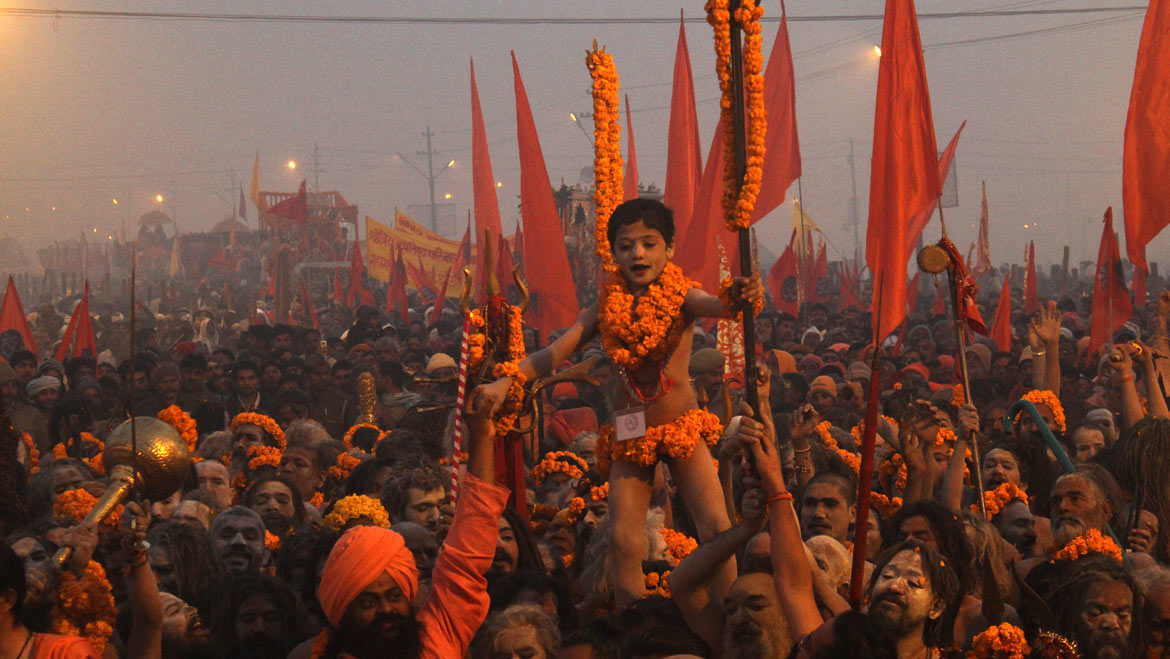
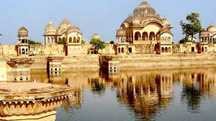 16 Nights / 17 Days
16 Nights / 17 Days 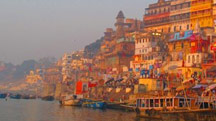 15 Nights / 16 Days
15 Nights / 16 Days 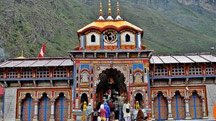 11 Nights / 12 Days
11 Nights / 12 Days 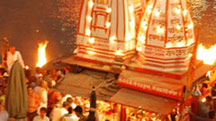 2 Nights / 3 Days
2 Nights / 3 Days 



